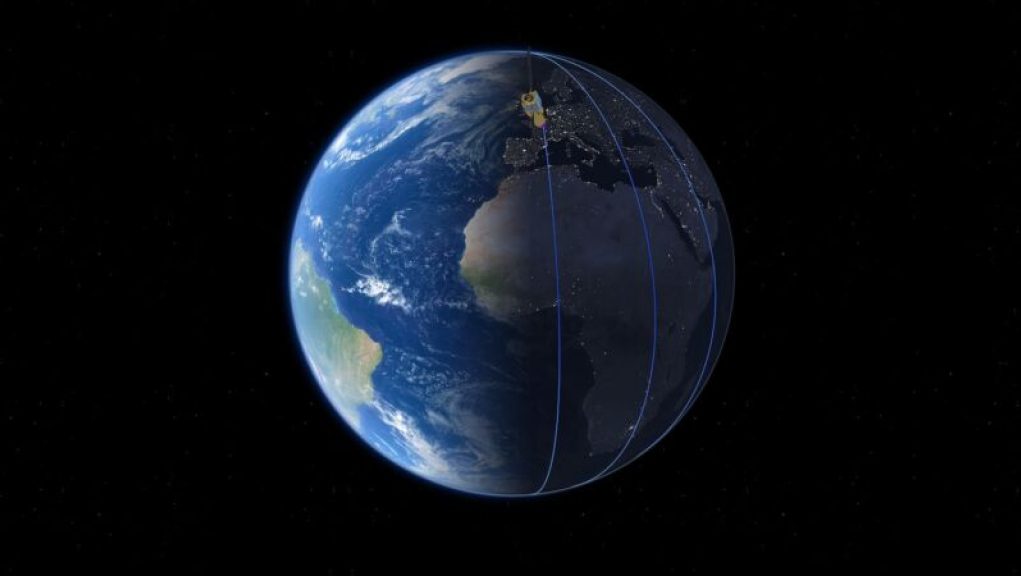The European Space Agency showcased its commitment to responsible space exploration by safely guiding one of its satellites back to Earth’s atmosphere. The Aeolus satellite, weighing about 1.1 metric tons, was skillfully directed towards a controlled re-entry, ensuring it would not pose a threat to any populated areas.
Unlike modern ESA satellites, Aeolus was not designed to meet the current standards for targeted re-entry. However, the space agency took proactive measures to prevent any potential risks. By ending the satellite’s science mission in April and utilizing its remaining fuel, engineers were able to steer Aeolus away from populated regions and towards a designated re-entry corridor.
Holger Krag, head of ESA’s safety office, expressed the uniqueness of this operation, comparing it to the assisted re-entry of the Skylab space station in the late ’70s. He emphasized that ESA’s efforts far surpass those of the past, demonstrating the agency’s commitment to setting new standards for space debris management and controlled re-entry.
Advertisement
NASA’s attempt to control Skylab’s re-entry in 1979 resulted in debris scattering across Western Australia. In contrast, ESA’s approach to Aeolus’ re-entry showcases the agency’s dedication to implementing the best practices available today. Simonetta Cheli, ESA’s director for Earth observation, hopes that ESA’s efforts will inspire other space agencies and commercial companies to address the issue of space debris and uncontrolled re-entry.
An “impossible mission”
Aeolus, a pioneering Earth science mission, spent nearly five years in a polar orbit, measuring wind speeds worldwide using an advanced laser system. Its success led to the incorporation of its data into operational weather forecast models. Despite facing numerous challenges during its development, Aeolus proved to be an invaluable asset.
After officially concluding the mission in April, ESA initiated the satellite’s descent. Through a series of thruster burns, Aeolus gradually lowered its orbit until it reached an altitude of just 75 miles. From there, the gentle drag of Earth’s atmosphere took over, causing the satellite to disintegrate over the Atlantic Ocean.
“Operations are over for Aeolus,” tweeted Josef Aschbacher, ESA’s director general. “Latest tracking data confirms our final maneuver was successful, and the hard work and dedication of the teams has given Aeolus a great chance for safe re-entry tonight.”
On April 29th, 2021, the European Space Agency made history with an unprecedented feat of technological achievement. After lifting off from Earth on January 22, the European Space Agency’s “Space Rider” – a miniaturized space shuttle – successfully executed an assisted re-entry and plunged back to Earth in a controlled manner.
The Space Rider was propelled into the Earth’s atmosphere using the Vega launch vehicle, and during its mission it spent time executing experiments in orbit. This mission marked the first time an autonomous craft had completed an assisted re-entry on its own.
The Space Rider was equipped with a reusable heat shield, thrusters, and navigational aids. This made it possible for it to slowly make its way back and eventually land in the Mediterranean Sea.
The ESA mission was a milestone in the pursuit of autonomous flights. This mission provided valuable insight into the engineering of these vehicles, proving that precise and complex re-entry scenarios are possible.
This ambitious mission may hold the potential to revolutionize space exploration and satellite missions. Building on the success of the Space Rider mission, ESA now aims to conduct more advanced missions in Earth orbit, and eventually, to put spacecraft into deep space.
The Space Rider mission is yet another example of what’s possible when humankind comes together to explore the unknown and push the boundaries of human intelligence. With brilliant minds from all around the world collaborating, it’s sure that one day many more exciting breakthroughs will be achieved.




















